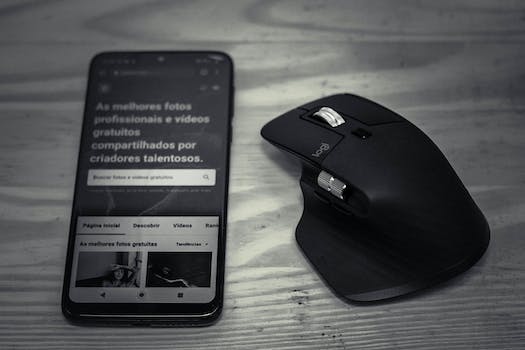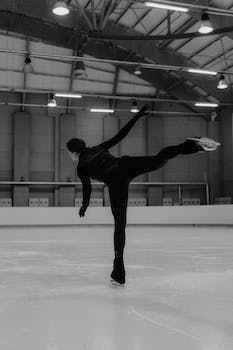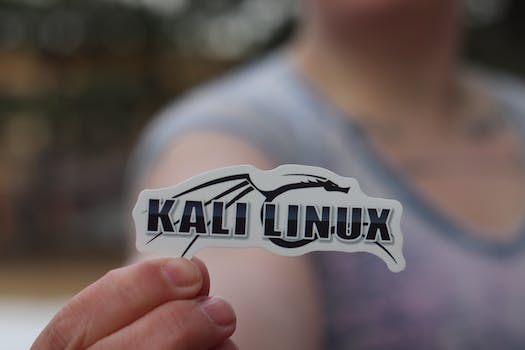

-
Table of Contents
Unveiling the CPU's Dynamic Dance with Memory and IO: Episode 4
Introduction
In Episode 4 of Exploring the CPU's Interaction with Memory and IO, we delve deeper into the intricate relationship between the central processing unit (CPU), memory, and input/output (IO) devices. This episode focuses on understanding how the CPU interacts with memory and IO, shedding light on the crucial role these components play in the overall functioning of a computer system. Join us as we unravel the complexities of this interaction and explore the fascinating world of CPU, memory, and IO integration.
The Role of Cache Memory in CPU Performance
Cache memory plays a crucial role in the overall performance of a CPU. It acts as a bridge between the CPU and the main memory, also known as RAM, and helps to speed up data access and retrieval. In this fourth episode of our series on the CPU's interaction with memory and IO, we will delve into the significance of cache memory and its impact on CPU performance.
To understand the role of cache memory, let's first take a step back and look at the hierarchy of memory in a computer system. At the top of this hierarchy is the CPU, which contains registers that provide the fastest and most expensive form of memory. However, registers have limited capacity and can only store a small amount of data. Therefore, the CPU needs to interact with other levels of memory to access larger amounts of data.
The next level in the memory hierarchy is the cache memory. Cache memory is a small, high-speed memory that is located closer to the CPU than the main memory. It acts as a buffer between the CPU and the main memory, storing frequently accessed data and instructions. By keeping this data close to the CPU, cache memory reduces the time it takes for the CPU to access the data, resulting in faster execution of instructions.
Cache memory operates on the principle of locality, which refers to the tendency of a program to access data and instructions that are close to each other in memory. There are two types of locality: temporal locality and spatial locality. Temporal locality refers to the tendency of a program to access the same data or instructions repeatedly over a short period of time. Spatial locality, on the other hand, refers to the tendency of a program to access data or instructions that are located close to each other in memory.
Cache memory takes advantage of both temporal and spatial locality to improve CPU performance. When the CPU needs to access data or instructions, it first checks the cache memory. If the data or instructions are found in the cache, it is known as a cache hit, and the CPU can retrieve the data quickly. However, if the data or instructions are not found in the cache, it is known as a cache miss, and the CPU needs to access the main memory to retrieve the data. Cache misses are more time-consuming and can result in a performance penalty.
To minimize cache misses and improve performance, cache memory uses a technique called caching algorithms. These algorithms determine which data or instructions should be stored in the cache and which should be evicted to make room for new data. One commonly used caching algorithm is the least recently used (LRU) algorithm, which evicts the least recently used data from the cache.
Cache memory is typically organized into multiple levels, with each level having a different capacity and access time. The first level, known as L1 cache, is the smallest but fastest cache, located closest to the CPU. It is divided into separate instruction and data caches to further improve performance. The second level, known as L2 cache, is larger but slower than L1 cache. Some CPUs also have a third level, known as L3 cache, which is even larger but slower than L2 cache.
In conclusion, cache memory plays a vital role in CPU performance by reducing the time it takes for the CPU to access data and instructions. It acts as a buffer between the CPU and the main memory, storing frequently accessed data and instructions. By taking advantage of the principle of locality and using caching algorithms, cache memory minimizes cache misses and improves overall performance. Understanding the role of cache memory is essential for optimizing CPU performance and designing efficient computer systems.
Understanding the Impact of Memory Hierarchy on CPU Efficiency

In the world of computer architecture, the central processing unit (CPU) plays a crucial role in executing instructions and performing calculations. However, the CPU cannot work in isolation; it relies on memory and input/output (IO) devices to function effectively. In this fourth episode of our series on the CPU's interaction with memory and IO, we will delve into the concept of memory hierarchy and its impact on CPU efficiency.
Memory hierarchy refers to the organization of different levels of memory within a computer system. At the top of this hierarchy is the CPU cache, a small but extremely fast memory that stores frequently accessed data and instructions. The cache is designed to bridge the speed gap between the CPU and main memory, which is slower but has a larger capacity.
The cache operates on the principle of locality, which states that programs tend to access a small portion of their memory at any given time. There are two types of locality: temporal and spatial. Temporal locality refers to the tendency of a program to access the same memory location multiple times within a short period. Spatial locality, on the other hand, refers to the tendency of a program to access nearby memory locations in a short span of time.
By exploiting these forms of locality, the cache can significantly improve CPU efficiency. When the CPU needs to access data or instructions, it first checks the cache. If the requested data is found in the cache, it is known as a cache hit, and the CPU can retrieve it quickly. However, if the data is not in the cache, it is known as a cache miss, and the CPU must retrieve it from main memory, incurring a significant performance penalty.
To minimize cache misses, modern CPUs employ sophisticated caching algorithms. One such algorithm is called the least recently used (LRU) policy, which evicts the least recently accessed data from the cache when it becomes full. This ensures that the most frequently accessed data remains in the cache, maximizing the chances of cache hits.
Beyond the cache, the memory hierarchy includes main memory, which is larger but slower than the cache, and secondary storage devices such as hard disk drives (HDDs) and solid-state drives (SSDs). The CPU interacts with these levels of memory hierarchy through IO operations.
IO operations involve transferring data between the CPU and external devices such as keyboards, mice, and storage devices. These operations are typically slower than CPU operations, and they can introduce significant delays in program execution. To mitigate this, modern CPUs employ techniques such as DMA (direct memory access), which allows IO devices to transfer data directly to and from main memory without CPU intervention.
Understanding the impact of memory hierarchy on CPU efficiency is crucial for computer architects and software developers. By optimizing memory access patterns and minimizing cache misses, they can improve the overall performance of a system. Additionally, advancements in memory technologies, such as the introduction of faster and larger caches, can further enhance CPU efficiency.
In conclusion, memory hierarchy plays a vital role in determining CPU efficiency. The cache, with its fast access times and exploitation of locality, acts as a bridge between the CPU and main memory. By understanding and optimizing memory access patterns, computer architects and software developers can unlock the full potential of the CPU and improve system performance.
Exploring Input/Output Operations and their Influence on CPU Functionality
Exploring the CPU's Interaction with Memory and IO: Episode 4
In the previous episodes of our exploration into the CPU's interaction with memory and IO, we delved into the crucial role of memory in storing and retrieving data. We also examined how the CPU interacts with memory through the memory bus. Now, in this fourth episode, we will shift our focus to input/output operations and their influence on CPU functionality.
Input/output operations, commonly referred to as IO operations, are essential for any computer system. These operations involve the transfer of data between the CPU and external devices such as keyboards, mice, printers, and storage devices. Without IO operations, computers would be limited to performing calculations and processing data internally, with no means of interacting with the outside world.
To understand the influence of IO operations on CPU functionality, we must first grasp the concept of IO devices and their communication with the CPU. IO devices are hardware components that enable the transfer of data between the computer and the external world. They come in various forms, each designed for a specific purpose. For example, a keyboard allows users to input text, while a printer produces hard copies of digital documents.
When an IO device needs to communicate with the CPU, it does so through a dedicated IO controller. The IO controller acts as an intermediary between the device and the CPU, facilitating the transfer of data. It manages the flow of information, ensuring that the CPU and the IO device can exchange data efficiently.
To initiate an IO operation, the CPU sends a command to the IO controller, specifying the desired action. For example, if a user presses a key on the keyboard, the CPU sends a command to the IO controller instructing it to transmit the corresponding character. The IO controller then retrieves the data from the device and transfers it to the CPU.
However, IO operations can be time-consuming compared to the speed at which the CPU operates. This discrepancy arises due to the inherent differences in the technologies used in IO devices and the CPU. While the CPU relies on high-speed electronic circuits, IO devices often employ slower mechanical or electromechanical components.
To mitigate this performance gap, modern computer systems employ various techniques. One such technique is the use of buffers. A buffer is a temporary storage area that holds data during IO operations. By using buffers, the CPU can continue executing other instructions while waiting for the completion of an IO operation. Once the IO operation is finished, the data is transferred from the buffer to the CPU.
Another technique used to enhance IO performance is the concept of interrupt-driven IO. In this approach, the CPU is not actively involved in the IO operation. Instead, the IO controller interrupts the CPU when the operation is complete, allowing it to resume its normal execution. This way, the CPU can perform other tasks while waiting for IO operations to finish, improving overall system efficiency.
In conclusion, input/output operations play a crucial role in the functionality of the CPU. IO devices enable computers to interact with the external world, facilitating data transfer between the CPU and various peripherals. However, due to the inherent differences in technology, IO operations can be slower than the CPU's processing speed. Techniques such as buffers and interrupt-driven IO are employed to bridge this performance gap, ensuring efficient data transfer and optimal system performance. Stay tuned for the next episode of our exploration, where we will delve deeper into the intricacies of CPU and memory interactions.
Q&A
1. What is the role of the CPU in interacting with memory and IO?
The CPU is responsible for managing and coordinating the interaction between memory and input/output devices (IO). It retrieves data from memory, processes it, and sends the results back to memory or IO devices.
2. How does the CPU interact with memory?
The CPU interacts with memory by fetching instructions and data from memory, storing intermediate results, and writing final results back to memory. It uses memory addresses to access specific locations in memory for reading or writing data.
3. How does the CPU interact with IO devices?
The CPU interacts with IO devices by sending commands and receiving data through input/output ports. It uses specific protocols and interfaces to communicate with different types of IO devices, such as keyboards, monitors, or storage devices.
Conclusion
In conclusion, Episode 4 of Exploring the CPU's Interaction with Memory and IO provides valuable insights into the intricate relationship between the CPU, memory, and input/output operations. The episode delves into the various mechanisms and protocols involved in data transfer, addressing, and synchronization. It highlights the importance of efficient memory management and the role of caches in optimizing performance. Additionally, the episode sheds light on the challenges and trade-offs associated with memory hierarchies and the impact of I/O operations on overall system performance. Overall, Episode 4 offers a comprehensive understanding of the CPU's interaction with memory and I/O, providing a solid foundation for further exploration in this domain.











